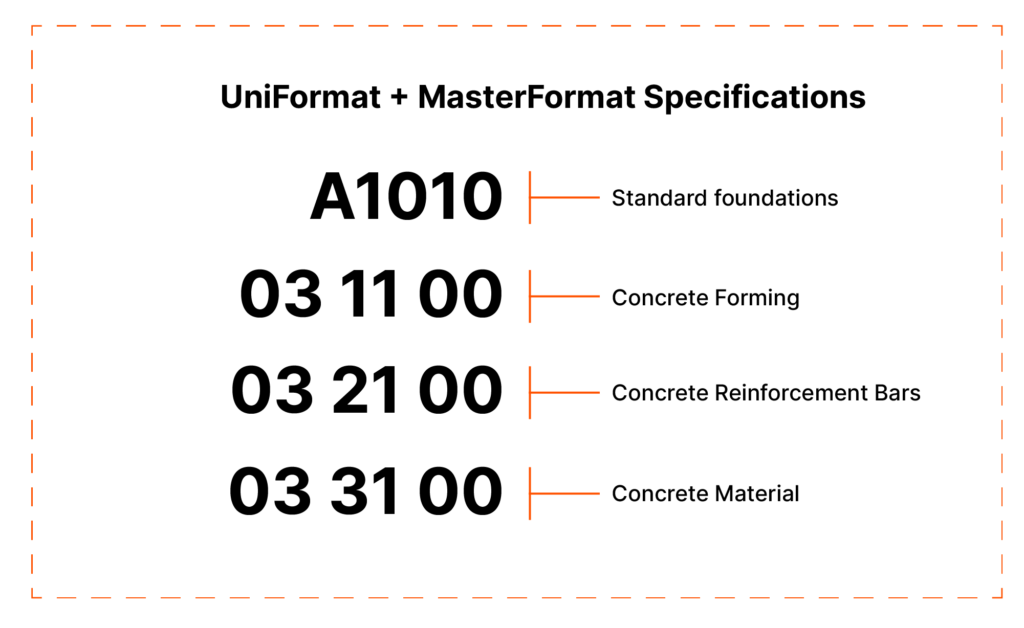— 9 min read
Work Breakdown Structure: Tips for Managing the Details
Last Updated Jan 3, 2024

A challenging part of being a project manager or general contractor is accounting for the high number of variables needed to pull off a construction project. That’s why many people use a work breakdown structure.
A work breakdown structure (WBS) is a project management technique that divides a complex project into small manageable tasks. Those tasks can define a project’s scope of work, timeline, and budget.
This article explores work breakdown structure, including how to make one and how it can be helpful.
Contents
Table of contents
Work Breakdown Structure Simplifies Projects
A work breakdown structure makes it easier to plan, assign work, estimate costs, and track progress and expenses by breaking a complex project into smaller tasks. This can also help with other parts of project planning. Below are key ways WBS help set clear expectations for projects.
- Define scopes of work: A WBS accounts for every part of the construction project, making it a unique tool to define what needs to be done, when it should be completed, and what’s required to pull it off. It also helps identify when something is outside a project’s scope of work, which can help avoid scope creep and unnecessary delays.
- Increase accountability: A WBS is a visual tool that can be shared with all stakeholders. This can help people better understand how their responsibilities and deadlines connect to the larger project and why it’s important they stay on schedule and on budget.
- Manage project costs: Defining small, manageable parts of a project helps to create better estimates. It also makes it easier to track expenses during construction and identify precise parts of a project that are costing more than expected.
- Phasing and scheduling: A WBS can make it easier to coordinate all the work that goes into a project, particularly for large projects that require phasing or early turnovers.
- Make better decisions: Understanding how to plan, how things align, and the impact of changes means people can better respond to the issues that inevitably come up during a project.
Different Types of Work Breakdown Structures
Work Breakdown Structure in construction is adaptable and can be used in a number of ways. Most of the time, a WBS is one of two types.
Deliverable-based WBS
A deliverable-based WBS organizes a project by identifying tangible parts of the project that need to be completed. For example, when building a house, a big deliverable might be the interior, which would then be broken down into smaller deliverables, such as electrical or plumbing. A deliverable-based WBS is focused on what will be built, rather than how it will be done.
By clearly defining deliverables, this approach can be helpful for estimating costs or coordinating particularly complex projects.
Phase-based WBS
A phase-based WBS, also known as process-based, divides a project into steps or actions needed to complete a project. Projects are often divided into phases, such as design, procurement, construction, inspection, and turnover. Each category is then broken into more specific actions and phases. However, a phase-based WBS still often ends with tangible deliverables, as those are easier to assign and assess for quality and completion.
The phased-based approach lays out a project chronologically, which can make it useful for sequencing and phasing projects that need to be done in a tight timeline.
Important Parts of Work Breakdown Structure
There are certain things most work breakdown structures have in order to be effective. Below is a closer look at a work breakdown structure's major components.
A Hierarchy
A WBS visually arranages a project’s components into a sort of family tree, with the largest, most broad categories at the top and increasingly specific categories going down. The last level should be distinct, actionable, and as specific as possible. This helps to account for all parts of a project and to see how parts relate.
Work Packages
The last level of the WBS is known as a work package. These are specific, actionable tasks, such as the roof or painting. By keeping them at the bottom, work packages become units to estimate costs, assess progress and quality, and define and track timelines.
Project Schedule and Key Milestones
The WBS and the project schedule have a back-and-forth relationship. Milestones that are established before the beginning of planning a project can be used to help create the WBS. In other cases, a WBS can be a way to determine the best possible timeline. Either way, by the time a WBS is completed, the schedule and milestones should be clearly marked and aligned with work packages so it can be referenced by all stakeholders.
WBS Dictionary
Many work breakdown structures have an accompanying dictionary, which defines and explains important parts of the WBS, such as deliverables, milestones, resources, materials, and construction methods.
Coding Systems
Beyond just the hierarchical structure, a WBS often has other coding systems that make it easy to reference and understand.
This could be as simple as color coding work packages, such as green for on-time and red for behind schedule.
Another simple example could be a large multi-family residential building that requires similar work in different buildings. Buildings might be assigned letters, such as A, B, C, etc. Parts of those buildings, such as floors, might be coded by number, such as 1, 2, 3, etc. The WBS could reference work in D4 and people would know where it’s referring.
There are industry-standardized codes often used on a WBS, which can help with budgeting and make work breakdown structures more uniform and easier to read. A standard code for building systems in North America is Uniformat, which divides things by major building systems, such as A1010 for foundations. Masterformat is a code commonly used for materials, such as 03-11-00 for formwork. These codes can be combined, so a subcontractor could find 03-11-00 listed under A1010 to find information about tasks and costs relating to formwork in foundations.

5 Steps to Create a Work Breakdown Structure
Below are a few steps to start creating an efficient work breakdown structure to help manage construction projects:
1. Collect information.
Gather as much information as possible to help create timelines, define deliverables, and phase the project in ways that align to client needs and contractor capacity. Helpful information might include schedules, drawings, project financials, pre-design work, supplier information, and material availability. Owners often have information that informs a WBS, such as requests for early turnover or an ideal date for substantial completion.
2. Define the project milestone schedule.
The gathered information can help define key milestones, important dates on the schedule, and expectations around time. This might include identifying a target date for an inspection, allowing time for shipping of specific materials, or defining parts of the building that need to be done for others to be started, such as completing wiring before putting up drywall.
3. Create the statement of work.
The statement of work includes a short description with any helpful context and the project’s ultimate goal, which is usually straightforward such as “54 8th Ave. Office Tower or “Johnson family residence”. The goal is placed at the top of the WBS to guide the rest of the plan.
4. Define major deliverables or project phases.
The main elements depend on whether the WBS is deliverable-based or phase-based. Major deliverables might include interior, substructure, or envelope. Major phases might include design, construction, or turnover. These high-level components comprise the first tier of the hierarchy below the goal.
5. Divide deliverables into subcategories.
Divide broad deliverables or processes into increasingly smaller categories until they’re specific enough they become work packages. For example, “interior” might be divided into things like “electrical.” “Electrical” could be divided into work packages, such as rough-in, installation, and testing.
The smallest subcategory is the work package, which should be as specific as possible, as they are the part of the WBS used to define budget and material needs, measure progress, and assign responsibilities.
Best Practices for Creating a WBS
When implementing work breakdown structure for projects, there are some key things to keep in mind to for seamless execution of this technique.
Remember the 100% rule.
The 100% rule is the idea that all necessary work should be represented in the WBS. This helps create a WBS that is comprehensive and authoritative and also helps identify tasks that are outside the scope of work.
Make it collaborative.
Creating a helpful and authoritative WBS usually requires input from many stakeholders, such as subcontractors and superintendents who have unique insights into what’s possible, best practices in a trade, or the capacity of their teams. This might look like asking them questions while creating the WBS or having a team session to review an early draft.
Ensure the WBS is visible.
Post the WBS on the jobsite and make a digital version easy to access. For both subcontractors and owners, a WBS can help to answer questions, identify key milestones, and understand why choices are made. This can increase investment and accountability by helping stakeholders understand their responsibilities and how they fit into the larger project.
Keep work packages at the bottom.
Ensure the smallest unit of work, work packages, are at the lowest level of the WBS. This helps ensure work packages are effective for assigning tasks, estimating costs, and defining timelines.
Assess material availability.
Any issue with ordering or receiving materials can lead to unexpected delays or costs. Assess material needs before making the WBS and continue to monitor availability and estimated arrival dates throughout the project.
Keep the WBS updated.
Update the WBS with changes in schedule and statuses of work packages, such as on-schedule, behind schedule, or complete. This also helps ensure issues are caught early and helps the project stay on schedule and on budget.
Rely on templates.
Creating a WBS can be difficult and time consuming. Whenever possible, start with templates that can be customized for each job. There are digital programs that create WBS templates, such as the one offered by Procore. Templates can help reduce time spent and can be refined over time to improve the planning process.
Work breakdown structures are adaptable.
Work Breakdown Structures can be used for more than managing large construction projects. They can be helpful anytime something complex needs to be broken into smaller, manageable parts. Understanding how the WBS works and how to create one can help improve many parts of project management, from estimating a budget, making a materials list, to assessing constructability.
Categories:
Written by
Colton Stokwitz
Colton Stokwitz is a Senior Strategic Product Consultant at Procore. Based in San Diego, Colton spent 11 years working as a project controls manager, lead interior superintendent and senior cost analyst at Turner Construction. He has a Bachelors of Science (BSc) in Construction Management from California Polytechnic State University-San Luis Obispo.
View profileGlen Austin
Glen Austin is a field team leader at New-Orleans based general contracting firm RNGD. Glen joined the Impetus team in 2014 as a superintendent, and has more than 20 years experience working in the construction industry. Outside of work, Glen enjoys spending time with his family, not to mention a good night’s sleep followed by a great cup of coffee.
View profileJames Hamilton
29 articles
James Hamilton is a writer based in Brooklyn, New York with experience in television, documentaries, journalism, comedy, and podcasts. His work has been featured on VICE TV and on The Moth. James was a writer and narrator for the show, VICE News Tonight, where he won an Emmy Award and was nominated for a Peabody Award.
View profileExplore more helpful resources

Construction Teamwork: Build a Solid Foundation With the Right Team
Construction is an industry of collaboration — no one person completes any job on their own. It could easily be argued that the most important skill for anyone in this...

8 Tips for Managing Multiple Construction Projects
By its nature, construction work is a juggling act, with project managers and general contractors (GC) constantly adapting to changing conditions, planning to make sure there are enough materials and...

Prefab Construction: The Risks and Rewards of Prefabrication
Prefabricated or “prefab” construction is similar to assembling a set of Lego blocks: Components are manufactured or assembled at a separate location and then assembled on-site. Compared with the traditional...

Construction Site Logistics: Best Practices for Building Smarter
The effective management of construction site logistics can separate a timely, on-budget and high-quality construction project from one that falls short. Construction site logistics refer to the operations that need...
